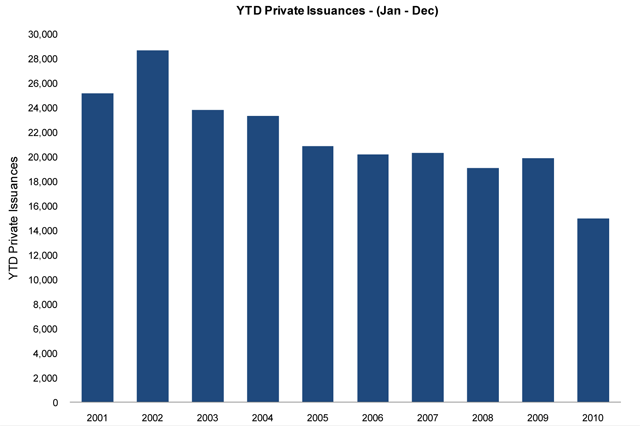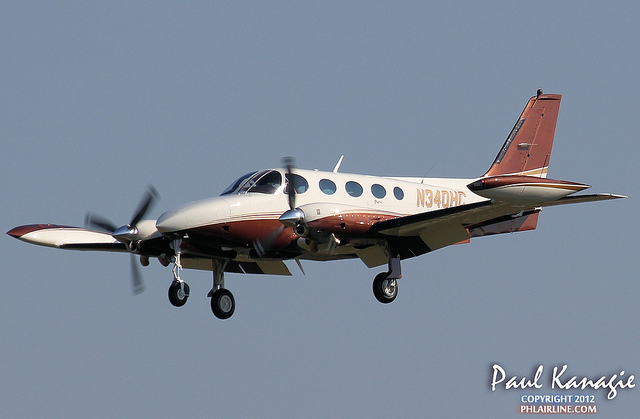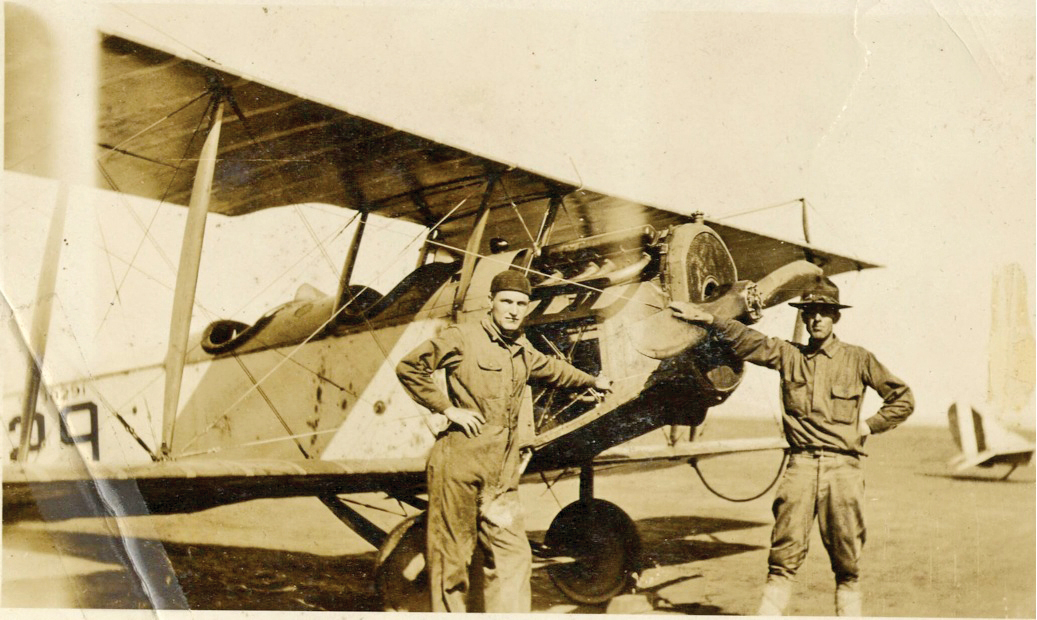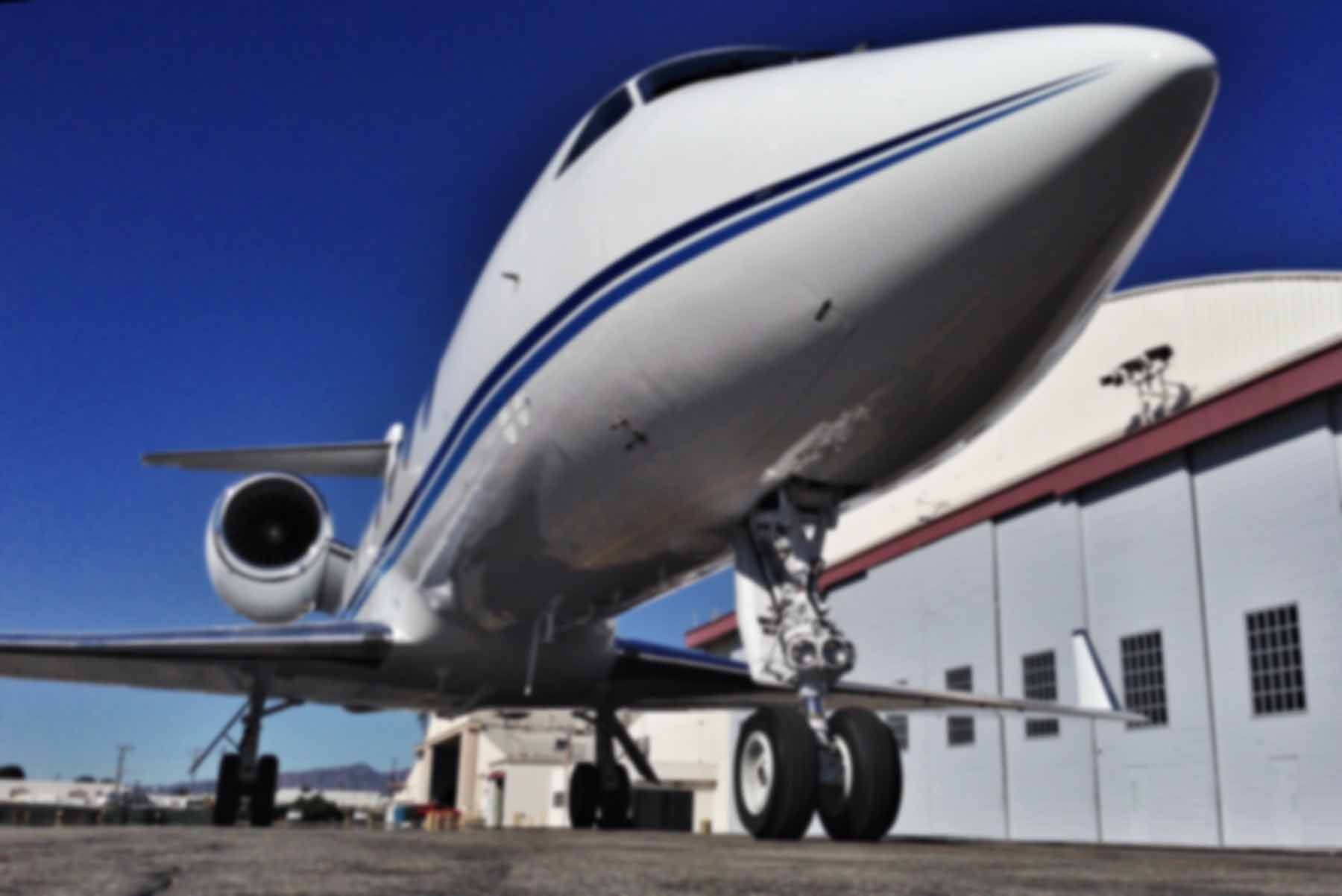Ask a dozen American pilots what the future holds for general aviation and I’d bet ten of them will opine that from where they stand, it doesn’t look good.
Can you blame them? Active pilots, hours flown, aircraft sales, and literally every other statistic the industry tracks has been trending downward for a long time. Between the inexorable rise in regulation and the flagging fortunes of our collective economy, there’s little reason to expect it will get better any time soon. I mean, who even has money to fly anymore?

Yes, the future looks bleak. And it is — especially if you’re viewing it through the prism of the late 70’s/early 80’s heyday. On the other hand, I’ve come to look at that period as an aberration. Much like last decade’s housing bubble, it was a unique and frankly unsustainable set of circumstances which were driven by demographic and economic factors we’re unlikely to see again. This isn’t necessarily a bad thing. Bubbles are destructive, whereas stability is a positive factor for just about any industry.
For many years, trying to figure out what GA would look like in the decades to come was an exercise in futility. It was predicted that the General Aviation Revitalization Act would fix the industry’s woes. It didn’t. Manufacturers resumed producing aircraft, but in limited numbers, and even then it was mostly the old designs at ever higher price points.
The recreational pilot certificate, we were told, would bring pilots back into the fold. It didn’t. I’m not sure I even know anyone who knows anyone who ever had one of those certificates.
More recently, the Light Sport rules were going to revolutionize aviation and swell the ranks of active pilots. It didn’t. What it did do was give us an admittedly wide variety of aircraft designs which are heavily — and arbitrarily — limited in their speed, size, and capability.
Year after year of looking through a glass darkly, trying to divine the future can be discouraging. But that doesn’t mean GA is doomed to extinction. It’s simply changing, and to see where the road leads, we must follow the apocryphal advice given to Woodward and Bernstein 40 years ago: follow the money.
As nice as it would be if the various FAA and industry initiatives could fix our problems, they cannot save aviation by themselves because GA responds not to missives from government or industry groups, but rather to the same factors that drive the economy as a whole.
On the certificated side, that means new airframes will continue to be prohibitively expensive due to liability expense, low volumes, and certification costs. Used aircraft, by contrast, will present a comparatively good value. This is already starting to create a sizable industry for rebuilding and retrofitting older airframes. The most extreme example of this is the warbird world, where folks have gone so far as to dig through three hundred feet of ice to recover an aircraft and then spend years and millions of dollars getting it back into airworthy status.
I’m not suggesting that’s in the cards for your average four-place GA aircraft, but it’s worth remembering that our airplanes are infinitely reparable. The only reason a damaged or worn-out airplane isn’t rebuilt is because — wait for it! — it’s not economically worthwhile. But it will be in the future as this cottage industry grows and begins to offer a substantial challenge to the ever-rising cost of factory-new airplanes.
At the last AOPA Summit in Palm Springs, Cessna — arguably the leader in GA manufacturing — didn’t even make an appearance, yet there were plenty of modified and refurbished aircraft on display. From winglets on an SR22 to turbine powerplants on a cabin-class C-340, it was eye-opening to see how vendors have responded to market forces. This is the future.

Well, half of it, anyway.
The other half lies not in certificated aircraft, but with Experimental-Amateur Built airplanes. Again, it’s all about the economics. You get much better value for your money without any of the limitations (assuming non-commercial operation) of the LSAs. This is already happening. Look at the RV series: more than 8,300 are flying, and another 10-15,000 are probably under construction at this very moment.
If the trend continues, the Van’s line alone will be producing more flying aircraft each year than all the other GA manufacturers combined. Think about that: general aviation, saved by an army of Davids.
The kits are getting faster and easier to build, there’s a large resale market, and the range of modifications and upgrades is too long to list. You can get a 200 mph fully aerobatic cross-country cruiser for $35,000. Already built, no less. Agile handling, sporty looking, yet extremely conventional in construction and material. So conventional, in fact, that it’s really a misnomer to refer to them as “experimental” at all.
The RV series may be what most people think of when they hear “home-built”, but there are designs out there from dozens of designers ranging from powered parachutes to composite turboprops and jets.

I should note that there is a wildcard in this scenario: the FAA. My crystal ball presupposes that the FAA won’t drop in on this party and regulate the Experimental-Amateur Built category out of existence. With a stroke of their proverbial pen, the FAA could change the rules and crush the one area of general aviation which is truly thriving. But barring that, it seems clear to me the future is Experimental and rebuilt/refurbished certificated aircraft.
Of course, aircraft are not much use unless there are people around to fly them, and that brings us to the next part of the equation: the pilot population. The bad news is that I just don’t see it reaching the level of the early 80’s. For one thing, the vast multitude of military-trained World War II, Korea, and Vietnam-era pilots which once populated the nation’s GA airports are mostly gone. For another, flying is never going to be inexpensive. And perhaps most significantly, our society as a whole has become far less tolerant of risk than it was 40 years ago.
You know, general aviation’s safety record may not improve despite new technology and additional training requirements. I for one value the freedom we have to fly when and where we want and think it’s far more important than incremental improvements in safety which require sacrificing that freedom. If we’re to continue being the land of the free and the home of the brave, there will be a price to pay. The beauty of our system is that we get to choose what risk level we’re comfortable with rather than having a faceless government agency do it for us. The day safety becomes the most important thing is the day we all stop flying permanently, because it’ll always be safer to stay on the ground than take a risk by venturing into the wild blue.
In that vein, it might be more appropriate — especially in light of today’s 4th of July holiday — to call the Experimental category the “Freedom” category. It represents the finest of American innovation and independence. If I had one hope for GA, even above keeping airports open and fighting off user fees, it would be that the Experimental category would remain unfettered by the government. In my opinion, everything flows from that. In fact, go back far enough in time and you’ll see that the entire aviation industry started as an experiment. The closer we remain to that ethos, the more vitality we’ll preserve for the future.

Another challenge for growth of the pilot population is competition. Can’t afford to fly a real aircraft? There are plenty of advanced RC models and high-fidelity computer simulators to help scratch that itch at relatively minimal cost. Even full-size aircraft may largely be operated by remote in the future as functions like cropdusting, police surveillance, fire fighting, cargo transport, and military flights are converted to UAVs operated by ground-based pilots. On the other hand, I can also see this creating a thirst for “real” flying among these system operators, so it might not be a bad thing for general aviation.
At the end of the day though, the fortunes of pilots and the aircraft they fly are inexorably linked. Should the E-AB market segment keep supplying us with low cost, high performance aircraft, I’m confident the pilots will be there to fly them. But if we allow the Feds to stamp out homebuilders or limit the versatility of their creations, sooner or later there just won’t be much worth saving.
This entry is part of an ongoing collaborative writing project entitled “Blogging in Formation”.

Fantastic post, Ron!
“The day safety becomes the most important thing is the day we all stop flying permanently, because it’ll always be safer to stay on the ground than take a risk by venturing into the wild blue.”
Great theme for the Independence Day post, for the Land of the Free and the Home of the Brave!
This entire week of “Blogging in Formation” posts has been a huge eye-opener for me. We really came together as a team by approaching this subject individually, each with our own viewpoints—just as with the American spirit!
You really educated me on the issues—and solutions—of the GA, experimental and home-built market. An excellent analogy with the Housing Bubble, I might add.
As I said, I’ve been expanding my brain all week during this epic Blogging in Formation series!
Thanks again for an excellent post.
Eric
Thank you, Eric. Likewise with your post on the airliners of the future. We’re all progressing toward that future, no matter how long it takes to get there. I do wonder how many years it’ll be before we are flying the kinds of things Arthur C. Clarke envisioned in “2001”…
Ron,
Amazing article! Of course I’m a little biased as a builder/pilot of a Van’s RV-8! 🙂
I totally agree with your premise, it’s no coincidence that the experimental segment is thriving in this economy. I happen to know a few good FAA guys that fly experimentals themselves, so we need to make sure more of them get in on the party in a way that compels them to be supportive. I know the EAA works very closely with FAA leadership to help protect this freedom on a going forward basis.
Brent
Good thinking! The more FAA personnel we have involved in the E-AB world, the better protected that segment will be against poorly conceived attempts to “make things better”. Call it the “Dale Carnegie” strategy. 🙂
I had you in mind when I was selecting images for the RVs. A friend had that great sunset photo of the -7, otherwise I would have been asking to use one of your beautiful black and white pictures. With the new site design, the page header has be carefully selected because the theme puts either black or white text over it. It gets washed out easily.
This is, as expected, a very thoughtful and well written piece. You raise some excellent points and draw very reasonable conclusions from them. As I read this, I wondered if any real economic change would or could develop from the FAA’s commitment to reexamine certification standards, which might provide some hope for a lower cost and better performing certified fleet in the future. Then again, given the inertia of the existing system and liability costs, any changes could be too little, too late to affect the equation you’ve described above.
Thanks, Chris! I’m not expecting any miracles from changes in FAA certification standards. But any improvement — however incremental — would certainly be welcome. Every little bit helps!
I enjoy your blog, by the way!
Ron, This is an excellent post and drives much thought. Amazing the variety of home built aircraft. If I had the hangar to do it… I would. But I’m going to ask your opinion on what to buy… I want a toy to promote aviation, but also carry the weight, and help people build multi-engine time.
Okay, so a thought crossed my mind when reading this. Do you think part of the decline is the fact we have become (or more emphasized) on a money generation. People only do things for a dollar? What happened to adventure, and enjoyment? An interesting thought. More to come on this one. Happy 4th of July!
If you want a multi-engine aircraft, you’ll probably have to go the certified route. I can’t think of any E-AB twins. The good news is that as fuel prices increase, twin prices decrease. You can get a nice multi-engine aircraft cheap these days. The bad news is that they’ll be expensive to own an operate. I haven’t checked prices lately, but I’ve seen more than a few nice King Airs for $400k. You can get an older Gulfstream for the same. Problem is you can’t afford to operate them.
You might find an older Baron to be just the right aircraft for your mission. Or perhaps a Seneca.
In answer to your second question, I think there’s still a great desire for adventure and enjoyment out there. What’s killing it in the aviation world is the high cost and inconvenience (think regulations, security, lack of airports, etc). People will only withstand so much before they say the heck with it and go on to a cheaper, less regulated activity
Thanks Ron, I think the $400K is a bit over my head. 🙂 And tonight I was sitting on the Lake with our neighbors and I decided I want a Lake property too. Ahhh… I need to get my movie done. I will. The expense of operating the twin is a huge. And if I get a nice plane, I need a hangar. I’ve been searching all of WA and that in itself is the challenge. So now, I shall keep looking. And you may be able to go cheaper, but you should won’t have more fun than flying. Thanks for the info.
Ron,
On Thursday, the Champ and I celebrated 26 years of happiness together–more than all my married years combined. And how like a marriage it has been: love at first flight, yes–I was in love from the first moment I saw wheels leave sod (and before I knew that “Champion” wasn’t just another spark plug). But we’re still together because I made her a priority, because I have been faithful, because I never take her for granted, and because I never tire of the perfect balance between freedom and discipline that my airplane not only represents (in the larger sense, as an analogy for life), but IS.
Yes, it’s expensive, but so is everything else. People all over America spend thousands of dollars on equipment, fees, and operating costs in pursuits that I simply don’t “get.” And since you broached the subject, let me state simply, here and now, that operating an RCA or UAV may be as worthy a pursuit as any other, but it isn’t an aviation experience. It isn’t flying any more than watching the golf ball you just smacked with a 7-iron is flying, and I don’t see any evidence that it leads to a desire to fly. The trouble is, those of us who ARE having aviation experiences are going to be forced to share the airspace with a growing number of people who have never been a part of the kind of community and tradition that powered flight has developed over the last 106 years (which is next-to-nothing compared to other disciplines that have had time to mature over hundreds, or even thousands, of years).
This new community has not had time to develop an ethos of self-discipline; they still think they ought to be able to do just about whatever the hell they want. Their feelings are still all tied up with a specious, libertarian notion that they imagine America once represented. But the America they imagine never really existed. America represents “freedom,” not “license.” They fail to detect the difference. Their coming-of-age will begin the very first time one of their fancy devices brings down a planeload of live human beings. It will happen. And on that day, their wild, under-age party will be over. They will be brought to heel. I just feel sorry (in advance) for the innocent lives that will be prematurely ended in order to make them see that there can be no real freedom without discipline. And if that discipline is not self-imposed, it will be compelled.
Over the years, I’ve found that flying either captures the spirit, or it does not; the people I have flown either get it or they don’t, and you can see it in their eyes on the very first flight. Sadly, I just don’t think kids “look up” as much as they did when flying was a new and novel idea. On Independence Day this year, while making circuits in celebration of our 26th anniversary, I noticed a cluster of kids in a nearby backyard. “How picturesque,” I thought. “How ‘Norman Rockwell’; all these kids lined up watch the airplane, and to dream of flight.” As I turned final, however, I got a closer look. They weren’t lined up to dream of flight; they were playing backyard soccer, and not an eye was turned upward. I was just another noisy threat to their peace and security.
Until we find a way to rekindle in the next generation our love of the balance of freedom and discipline–the balance of all things, really–our numbers will continue to dwindle, and with it, the power to lay claim to the sky we love.
Thanks for a great blog, as always,
ej
Oops! Make that 110 years of powered flight!
ej